Irrigation Management
About Irrigation Management
Water requirement
|
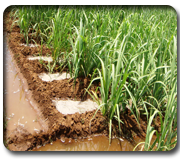 |
Average water requirement for sugarcane
-
Average water requirement for sugarcane is 1800 to 2200 mm.
S.No. |
Crops |
Duration in days |
Water requirement (mm) |
No. of irrigations |
1. |
Sugarcane |
365 |
2000 |
24 |
For 12 months sugarcane crop water requirement at each growth phase
Irrigation interval approach
Growth Phase |
Duration of phase |
Water Requirement |
Germination |
0-45 days |
300mm |
Tillering Phase |
45-120 days |
550mm |
Grand Growth Phase |
120-270 days |
1000mm |
Ripening Phase |
270-360 days |
650mm |
Irrigation interval in different season and type of soil
Growth Phase |
Irrigation Interval (days) |
||
Coarse textured soil |
Medium textured soil |
Fine textured soil |
|
Germination(0-45 days ) |
5-6 |
6-7 |
8-10 |
Tillering Phase(45-120days ) |
6-7 |
7-10 |
12-15 |
Grand Growth Phase(120-270days) |
7 |
10 |
12-15 |
Ripening Phase(270-360 days) |
10 |
12-15 |
15-20 |
Water Use Efficiency of Different irrigation systems
Irrigation system |
Water applied (ha -cm) |
Cane yield (mt/ha) |
Water use efficiency |
C. C.S. (mt/ha) |
Rain gun sprinkler |
175.26 |
126.56 |
0.72 |
17.87 |
Drip irrigation |
132.14 |
128.64 |
0.97 |
18.29 |
Furrow irrigation |
258.45 |
104.42 |
0.4 |
14.71 |
Poor irrigation leads to
|
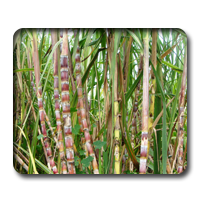 |
Heavy irrigation leads to
|
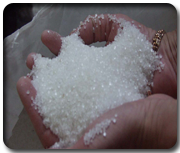 |
Irrigation Methods
Flood irrigation:
|
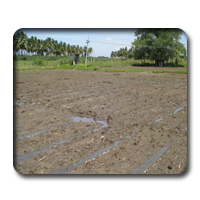 |
Furrow irrigation:
|
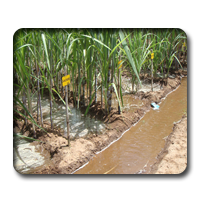 |
Alternate skip furrow method:
|
 |
Sprinkler irrigation:
|
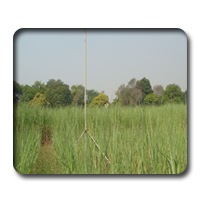 |
Drip irrigation:
|
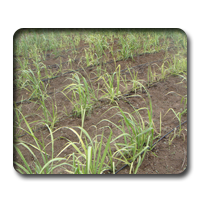 |
Drip Irrigation
Drip Irrigation
|
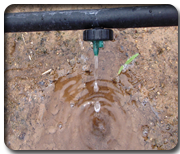 |
Surface Drip:
|
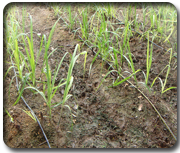 |
Subsurface Drip (SDI):
|
 |
Advantages
There is considerable saving of water in this method of irrigation. |
Sugarcane Drip Design Guidelines
Planting pattern |
Drip system |
Distance (m) |
Dripline installation depth (cm) |
Emitter distance |
Discharge |
||
Two rows of a pair |
Two paired rows / two rows |
Two driplines |
|||||
Single row |
Surface |
--- |
1.2 to 1.5 |
1.2 to 1.5 |
--- |
0.4 to 0.6 |
1.0 to 3.0 |
Paired row |
Surface |
0.4 to 1.0 |
1.4 to 2.0 |
1.8 to 2.5 |
--- |
0.4 to 0.6 |
1.0 to 3.0 |
Paired row |
Sub surface |
0.4 to 1.0 |
1.4 to 2.0 |
1.8 to 2.5 |
0.15 to 0.30 |
0.4 to 0.6 |
1.0 to 2.3 |
Major benefits of drip irrigation
Water
-
Saving irrigation water 40 - 70 %
-
Low Labour cost for irrigation
-
Increased water use efficiency
-
Uniformity in water distribution (90%)
-
Suitable for inferior quality irrigation water
-
Use of saline water is possible
Soil
-
Suitable for any type of soil
-
Suitable for marginal and undulating land
-
Low tillage requirement
Fertigation
Fertigation
|
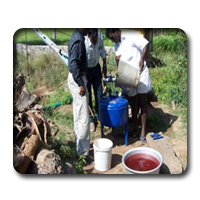 |
Concept of fertigation
|
Requirement & Type of Water soluble fertilizers in Sugarcane |
Fertigation Schedule
Crop stage |
Duration in days |
Fertilizer grade |
No. of times |
Quantity (kg/time) |
First stage |
From planting to 70 days(5,10…. 70th day) |
12-61-00 |
14 |
0.9 |
13-00-45 |
14 |
1.8 |
||
Urea |
14 |
12.1 |
||
Second stage |
71 days to 120 days |
12-61-00 |
10 |
1.2 |
13-00-45 |
10 |
5.0 |
||
Urea |
10 |
20.9 |
||
Third stage |
121 days to 160 days |
12-61-00 |
8 |
3.1 |
13-00-45 |
8 |
5.6 |
||
Urea |
8 |
14.1 |
||
Fourth stage |
161 day to 210 days |
12-61-00 |
10 |
2.5 |
13-00-45 |
10 |
6.8 |
||
Urea |
10 |
8.3 |
Fertigation Schedule for Seasonal (12 months)/Ratoon Sugarcane
Days After Planting |
Nutrients (kg/ha/day) |
||
N |
P2O5 |
K2O |
|
1-30 Days |
1.20 |
0.10 |
0.20 |
31-80 Days |
1.50 |
0.40 |
0.24 |
81-110 Days |
2.00 |
1.00 |
0.40 |
111-150 Days |
0.75 |
0.30 |
0.75 |
151-190 Days |
-- |
1.50 |
|
Fertigation Schedule for Preseasonal (14 to 16 months) Sugarcane
Days After Planting |
Nutrients (kg/ha/day) |
||
N |
P2O5 |
K2O |
|
1-30 Days |
1.5 |
0.15 |
0.25 |
31-80 Days |
2.0 |
0.60 |
0.30 |
81-110 Days |
2.5 |
1.50 |
0.50 |
111-150 Days |
0.75 |
0.50 |
1.0 |
151-190 Days |
-- |
1.80 |
|
Advantages of fertigation
-
Ensures a regular flow of water as well as nutrients resulting in increased growth rates for higher yields
-
Offers greater versatility in the timing of the nutrient application to meet specific crop demands
-
Safer application method which eliminates the danger of burning the plant root system
-
Offers simpler and more convenient application than soil application of fertilizer thus saving time, labour, equipment and energy
-
Improves fertilizer use efficiency
-
Reduction of soil compaction and mechanical damage to the crops
-
Convenient use of compound and ready-mix nutrient solutions containing also small concentration of micronutrients.
-
Free from chlorides and sodium
-
No salt build up in the crop root zone
-
Most of the fertilizers are blended with micronutrients.
Fertigation Offers Several Distinct Advantages in Comparison to Conventional Application Methods:
|
Fertilizers Suitable for Fertigation Via Drip Irrigation System
Nutrient |
Water soluble fertilizers |
Nutrient content |
Nitrogen |
Urea |
46-0-0 |
Phosphorus |
Monoammonium Phosphate |
12-61-0 |
Potassium |
Potassium Chloride |
0-0-60 |
NPK |
Polyfeed |
19-19-19 |
Micronutrients |
Fe EDTA |
13 |
Drought Management
Drought
Drought is a meteorological term and is defined as a period without a significant rainfall. Infact, when evapo-transpiration exceeds soil moisture supply i.e. water uptake, the water deficit/drought is resulted. Sugarcane being a long duration crop which requires more irrigation. In sugarcane, Germination and grand growth phase are the two important periods which requires more irrigation. In India this period comes on summer months and availability of water is poor. So the requirement of water is insufficient during those period which leads to drying of crop and yield loss. |
Drought Management:
|
 |

